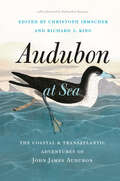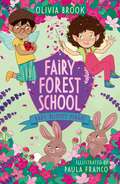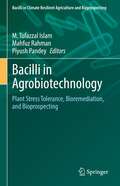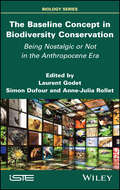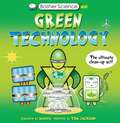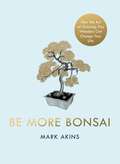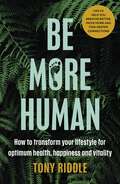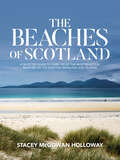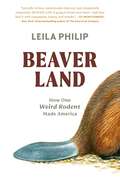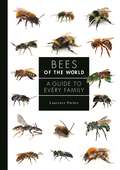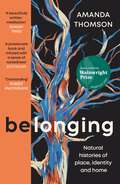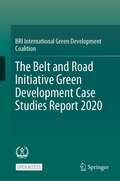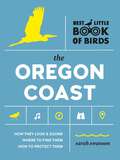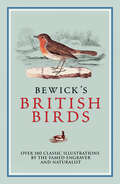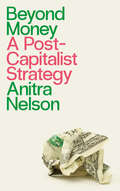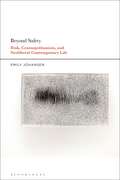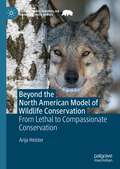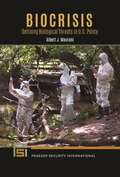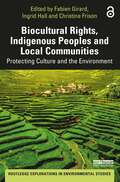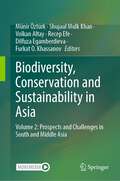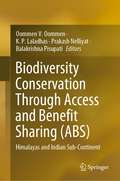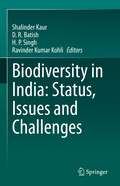- Table View
- List View
Audubon at Sea: The Coastal and Transatlantic Adventures of John James Audubon
by Subhankar BanerjeeThis one-of-a-kind, lavishly illustrated anthology celebrates Audubon’s connection to the sea through both his words and art. The American naturalist John James Audubon (1785–1851) is widely remembered for his iconic paintings of American birdlife. But as this anthology makes clear, Audubon was also a brilliant writer—and his keen gaze took in far more than creatures of the sky. Culled from his published and unpublished writings, Audubon at Sea explores Audubon’s diverse observations of the ocean, the coast, and their human and animal inhabitants. With Audubon expert Christoph Irmscher and scholar of the sea Richard J. King as our guides, we set sail from the humid expanses of the American South to the shores of England and the chilly landscapes of the Canadian North. We learn not only about the diversity of sea life Audubon documented—birds, sharks, fish, and whales—but also about life aboard ship, travel in early America, Audubon’s work habits, and the origins of beloved paintings. As we face an unfathomable loss of seabirds today, Audubon’s warnings about the fragility of birdlife in his time are prescient and newly relevant. Charting the course of Audubon’s life and work, from his birth in Haiti to his death in New York City, Irmscher and King’s sweeping introduction and carefully drawn commentary confront the challenges Audubon’s legacy poses for us today, including his participation in American slavery and the thousands of birds he killed for his art. Rounded out by hundreds of historical and ornithological notes and beautiful illustrations, and with a foreword by distinguished photographer and conservationist Subhankar Banerjee, Audubon at Sea is the most comprehensively annotated collection of Audubon’s work ever published.
Baby Bunny Magic: Book 2 (Fairy Forest School #2)
by Olivia BrookA brand-new fairy school series about helping animals and looking after nature, from the home of Rainbow Magic!Poppy Merrymoss has just started at Oakwings Academy, a magical school where fairies learn how to care for the forest around them and its inhabitants. Poppy and her friends are getting ready for the upcoming Blossom Fair where animals gather to exchange food before they go into hibernation. It's not long until evil Lady Nightshade appears, steals the food and cocoons the adults. It's up to Poppy to stop her! Can Poppy and her friends defeat Lady Nightshade and rescue the baby bunnies caught up in the chaos? Look out for Poppy Merrymoss's next adventure, Fairy Forest School: The Snowflake Charm.
Bacilli in Agrobiotechnology: Plant Stress Tolerance, Bioremediation, and Bioprospecting (Bacilli in Climate Resilient Agriculture and Bioprospecting)
by M. Tofazzal Islam Mahfuz Rahman Piyush PandeyThe third volume of the series ‘Bacilli and Agrobiotechnology’ is comprised of 25 chapters that bring a unique perspective to the readers about Bacillus-mediated biotic and abiotic plant stress tolerance, bioremediation and bioprospecting. These chapters are prepared by the leading scientists of global repute. The negative impacts of agrochemicals such as chemical fertilizers and pesticides on human health and environment are paramount. Bacillus and allied genera of beneficial plant-associated microbes are presenting beacon of hope to the farmers, plant scientists and stewards of environment. Several chapters of this volume focus on the induction of various signaling pathways in plants by Bacillus spp. to alleviate biotic and abiotic stresses impacted by global climate change Agricultural lands contaminated with heavy metals affect the ecological food chain starting from crop cultivation. How the toxic effects of trace metals originating from industrial effluents and agrochemicals can be remediated? This book addresses how to overcome these issues by applying elite strains of Bacillus. Bioprospecting is a systematic and organized search for conversion of bioresources to industrially important products by utilizing microbe-derived metabolites. This volume is enriched by including the bioprospecting aspects mediated by Bacillus spp. with novel insights.
The Baseline Concept in Biodiversity Conservation: Being Nostalgic or Not in the Anthropocene Era
by Laurent Godet Simon Dufour Anne-Julia RolletThe Anthropocene era has been marked by such significant human pressure that it has led to the sixth mass extinction. The Baseline Concept in Biodiversity Conservation interprets human domination of the Earth as the process of gradual landscape change, the execution of which is neither linear nor homogeneous. This book is structured around three key questions: Where and when did everything go wrong? How do we define baseline states for biodiversity conservation strategies? How are reference states mobilized in a concrete way through case studies? Today, biodiversity conservation faces a dilemma that this book sheds light on: return to states less modified by humans than today but in a world that has changed significantly; or, let the nature of tomorrow express itself where it still can but without a road map.
The Baseline Concept in Biodiversity Conservation: Being Nostalgic or Not in the Anthropocene Era
by Laurent Godet Simon Dufour Anne-Julia RolletThe Anthropocene era has been marked by such significant human pressure that it has led to the sixth mass extinction. The Baseline Concept in Biodiversity Conservation interprets human domination of the Earth as the process of gradual landscape change, the execution of which is neither linear nor homogeneous. This book is structured around three key questions: Where and when did everything go wrong? How do we define baseline states for biodiversity conservation strategies? How are reference states mobilized in a concrete way through case studies? Today, biodiversity conservation faces a dilemma that this book sheds light on: return to states less modified by humans than today but in a world that has changed significantly; or, let the nature of tomorrow express itself where it still can but without a road map.
Basher Science Mini: Green Technology (Basher #138)
by Tom JacksonWorld, we’ve got a problem! Climate Change. Make that two problems as Pollution is in the frame. In Basher Science Mini: Green Technology, scientific wizardry rides to the planet’s rescue. From saving the birds and the bees, to cleaning up the seas and waving goodbye to plastics, green tech is part of the solution to climate change. Some solutions are really out there, take a bow Space Mirrors, while others are close to home, we see you, Solar Panels! And you, too, Electric Vehicle! Our motto is protect and repair. Let’s get started.Perfect for home or school, Basher's highly original books make difficult concepts tangible, understandable and even lovable. Chatty first-person text and stylish, contemporary character illustrations give a voice, personality and story to each topic – a brilliant way to communicate science.
Be More Bonsai
by Mark AkinsDiscover how the art of growing bonsai trees can lead to a happier, more mindful way of lifeAmid the chaos of modern life, the ancient art of tending to bonsai can bring calm and perspective.The central tenets of this beautiful, meditative practice teach us patience, focus, calmness, perspective, planning, mindfulness and many more traits that can help us in our busy, challenging everyday lives.This calming companion will guide you through:· Caring for your own bonsai tree· Applying the mindfulness of cultivating bonsai to everyday life· The ancient Eastern philosophy of tending to bonsaiFrom the shedding of leaves representing the letting go of material possessions, to carefully tending to the bonsai roots just as we should our own core values, Be More Bonsai is filled with wisdom that you'll cherish every day.Through the pages of this unique book, drawing on thousands of years of wisdom, elegant philosophy and a simpler, ancient way of life, we can all learn to Be More Bonsai.
Be More Human: How to transform your lifestyle for optimum health, happiness and vitality
by Tony Riddle'Tony Riddle's mission is to present ways of living that are more in sync with our human biology, to help us thrive in this modern world' Dr Rangan Chatterjee'This book is brilliant with such an important message' The Happy Pear ___________________________The ultimate guide to boosting your mental and physical health by reconnecting with the way we, as humans, were supposed to live, eat, sleep, breathe and move.The bright lights, late nights and constant hustle of our modern world have detached us from the way we, as humans, were supposed to live, connect and thrive. Be More Human explores the importance of reconnecting with our natural state and help us learn how to meet our true needs and live more naturally. Tony Riddle (@thenaturallifestylist) will explore how the majority of us do not sit, breathe, eat, sleep or move as nature intended and so we're actively going against our biology. This book will help us all to reassess our habits and tap back into our natural rhythms and ways of being to optimise our mental and physical wellbeing, reduce stress, sit correctly, breathe better and improve our quality of sleep.Tony is committed to helping us reconnect with how we were built to live in a way that can be incorporated into our hectic, modern lifestyles. His expertise will make this a transformative, empowering and practical guide to getting back in tune with a happier, healthier self to discover physical, emotional, mental and spiritual strength and wellbeing.We can't all live in nature, but we can all live more naturally and learn how to thrive instead of just survive.___________________________'Inspiring read' Rich Roll, author of Finding Ultra'Vital stuff' Bruce Parry
The Beaches of Scotland: A selected guide to over 150 of the most beautiful beaches on the Scottish mainland and islands (The Beaches of #2)
by Stacey McGowan HollowayScotland is renowned for its dramatic, fierce landscapes, but many people don’t realise that some of the country’s most exhilarating scenery rests on its coastline. The Beaches of Scotland by Stacey McGowan Holloway is a guide to over 150 hand-picked beaches around Scotland’s coast, stretching from the mainland to the Outer Hebrides before sweeping north to Orkney and Shetland. These beaches offer something for everyone, from gentle sands which feel almost tropical to rugged coves which can only be accessed by kayak. The selected beaches have not been chosen for purely aesthetic reasons: these locations offer some amazing opportunities for adventure. From surfing to snorkelling, kayaking, camping and cold-water swimming, this book travels from Kilmory Beach, with its views over the Paps of Jura, along single-track roads to Singing Sands on the Ardnamurchan peninsula. It takes you from Portabello on the edge of Edinburgh’s bustling streets to Kervaig Beach in the far north-west, where the lucky visitor may spot seals or puffins. Experience Scotland at its wildest and most stunning at Achnahaird Bay, bask in the otherworldly sense that these remote beaches can inspire at Balnakeil, gaze in awe at the scenery you can’t quite believe is real on Berneray’s West Beach, or blow the cobwebs away as you wander along the sand of Dornoch in the far north-east. Whether you’re after a thrilling day getting salt in your hair or a peaceful escape from responsibilities and worries, Scotland’s coast has it all. Featuring information on the facilities, access and activities that can be enjoyed at each beach, as well as custom mapping and stunning photography, The Beaches of Scotland is the perfect companion to your exploration of Scotland’s stunning coastline.
Beaverland: How One Weird Rodent Made America
by Leila PhilipAn intimate and revelatory dive into the world of the beaver—the wonderfully weird rodent that has surprisingly shaped American history and may save its ecological future. From award-winning writer Leila Philip, Beaverland is a masterful work of narrative science writing, a book that highlights, though history and contemporary storytelling, how this weird rodent plays an oversized role in American history and its future. She follows fur trappers who lead her through waist high water, fur traders and fur auctioneers, as well as wildlife managers, PETA activists, Native American environmental vigilantes, scientists, engineers, and the colorful group of activists known as beaver believers. Beginning with the early trans-Atlantic trade in North America, Leila Philip traces the beaver&’s profound influence on our nation&’s early economy and feverish western expansion, its first corporations and multi-millionaires. In her pursuit of this weird and wonderful animal, she introduces us to people whose lives are devoted to the beaver, including a Harvard scientist from the Blackfeet Reservation in Montana, who uses drones to create 3-dimensional images of beaver dams; and an environmental restoration consultant in the Chesapeake whose nickname is the &“beaver whisperer&”. What emerges is a poignant personal narrative, a startling portrait of the secretive world of the contemporary fur trade, and an engrossing ecological and historical investigation of these heroic animals who, once trapped to the point of extinction, have returned to the landscape as one of the greatest conservation stories of the 20th century. Beautifully written and impeccably researched, Beaverland reveals the profound ways in which one odd creature and the trade surrounding it has shaped history, culture, and our environment. The New York Times Editors' Choice NPR Science Friday Book Club Selection
Bees of the World: A Guide to Every Family (A Guide to Every Family #5)
by Laurence PackerA beautifully illustrated introduction to the incredible variety of bees from around the worldWhen many people think of bees, they are likely to picture the western domesticated honey bee, insects that live in large, socially complex societies inside a hive with a single queen and thousands of workers. But this familiar bee is just one of more than 20,000 species of bees—and almost none of the others is anything like it. In Bees of the World, Laurence Packer, one of the world’s foremost experts on wild bees, celebrates the amazing diversity of bees—from size and appearance to nests and social organization.Providing clear, accurate accounts of the seven bee families, Bees of the World presents all the key information on generic characteristics, habits, and habitat, illustrated with incredible and often rare photographs that show bees in their natural habitats—foraging, nesting, raising their young, and more. The book reveals the secrets of these extraordinary insects as well as their importance in the global ecosystem and the ways humans can help protect them.Provides a richly illustrated exploration of bees from around the worldExamines more than 100 genera of bees, giving a taste of the remarkable breadth of bee appearance and biologyExplores bee anatomy, behavior, classification, evolution, life cycle, and habitats
Belonging: Natural histories of place, identity and home
by Amanda ThomsonReflecting on family, identity and nature, Belonging is a personal memoir about what it is to have and make a home. It is a love letter to nature, especially the northern landscapes of Scotland and the Scots pinewoods of Abernethy – home to standing dead trees known as snags, which support the overall health of the forest. Belonging is a book about how we are held in thrall to elements of our past. It speaks to the importance of attention and reflection, and will encourage us all to look and observe and ask questions of ourselves. Beautifully written and featuring Amanda Thomson's artwork and photography throughout, it explores how place, language and family shape us and make us who we are.
The Belt and Road Initiative Green Development Case Studies Report 2020
by BRI International Green DevelopmentThis is an Open Access book. In accordance with the 2030 Agenda for Sustainable Development, it showcases 17 projects under the framework of Belt & Road Initiative (BRI). These projects cover ninefields, namely, biodiversity and ecosystem, clean energy, clean water, sustainable transportation, solid waste treatment, sustainable consumption and production, green buildings, sustainable foodproduction and corporate social responsibility. Aiming at achieving green development, these projects, in their implementation, adhere to the concept of ecological civilization, combine China’s strict environmental protection systems and international standards, and take various measures of environmental protection based on the conditions of the local environment. These measures include joint efforts with local governments, businesses and communities, optimizating of design and construction plans, strict controling over different types of pollutants, and in situ conservation of species and ecosystems.The experience and practice of these 13 projects set an example for the latecomers.
Best Little Book of Birds: The Oregon Coast (Best Little Book of Birds)
by Sarah SwansonThe Best Little Book of Birds launches a new series of practical, pocket-sized, and beginner-friendly birding guides. The first book in the series highlights the must-see species found at the Oregon Coast.
Bewick's British Birds: Over 180 Classic Illustrations by the Famed Engraver and Naturalist
by Thomas BewickWith Bewick on my knee, I was then happy...' Jane EyreCharlotte Bronte's heroine was not alone in her enjoyment of Thomas Bewick's British Birds - since its first publication in 1797 it has become one of the best-loved classics of natural history. Bewick's masterful woodcuts are more than scientific records; each beady eye and jaunty pose betrays the artist's love of birds.This edition includes over 180 bird species, from garden favourites such as robins, blackbirds and finches, to predators such as the osprey and the majestic golden eagle. Each entry is illustrated with an engraving, and throughout the book are narrative vignettes typical of Bewick's playful, engaging style.
Beyond Money: A Postcapitalist Strategy
by Anitra Nelson'A fascinating portal into arguments about why we need to get beyond money' - Harry Cleaver What would a world without money look like? This book is a lively thought experiment that deepens our understanding of how money is the driver of political power, environmental destruction and social inequality today, arguing that it has to be abolished rather than repurposed to achieve a postcapitalist future. Grounded in historical debates about money, Anitra Nelson draws on a spectrum of political and economic thought and activism, including feminism, ecoanarchism, degrowth, permaculture, autonomism, Marxism and ecosocialism. Looking to Indigenous rights activism and the defence of commons, an international network of activists engaged in a fight for a money-free society emerges. Beyond Money shows that, by organising around post-money versions of the future, activists have a hope of creating a world that embodies their radical values and visions.
Beyond Safety: Risk, Cosmopolitanism, and Neoliberal Contemporary Life
by Emily JohansenBeyond Safety argues that concerns about the ethical impossibility of individual safety in the face of risks with increasingly obvious global consequences alters representations of neoliberal contemporary life. As the climate crises in the Caribbean and Australia, ongoing European refugee and American border crises, and, most recently, anxieties about Coronavirus illustrate, contemporary life is characterized by global connections that produce and reflect precarious outcomes and dangers. The ability to ignore risk or shift it to others underscores the fact that it is mitigable for particular segments of society while inescapable for others. Emily Johansen investigates depictions of global danger and safety in contemporary transnational fictional and popular texts-those characterized by a narrative or representational emphasis on border crossing and global interdependences. She demonstrates how these texts use risk to question and re-imagine the norms and practices of contemporary global citizenship. Beyond Safety thus brings together three of the central keywords of contemporary literary criticism of the last ten years (cosmopolitanism, precarity, neoliberalism) and shows how their intersection allows for a fuller conception of contemporary life and imagines a new global future.
Beyond the North American Model of Wildlife Conservation: From Lethal to Compassionate Conservation (The Palgrave Macmillan Animal Ethics Series)
by Anja HeisterThe North American Wildlife Conservation Model (NAM) is the driver of a strong anthropocentric stance, which has legalized an ongoing, annual exploitation of hundreds of millions of wild animals, who are killed in the United States through trapping, hunting and other lethal practices. Increasingly, the American public opposes the killing of wild animals for recreation, trophies and profit but has little—if any—knowledge of the Model. The purpose of this book is to empower the public with knowledge about the NAM’s insufficiencies and to help expedite the shift from lethal to compassionate conservation, an endeavour urgently needed particularly under the threats of climate change, human population growth and accelerating plant and animal species extinctions.With a focus on trapping, this book exposes the NAM's belief in human supremacy and its consequences for wild animals and their ecosystems, the same value that is driving the ongoing global destruction of nature and accelerating species extinction. Motivated by a deep concern for wild animals who suffer and whose lives are extinguished each year by 'sportsmen and women', this book exposes the violent treatment of wild animals inherent in governmental-promoted hunting and trapping programs, while emphasizing the importance of empathy and compassion for other animals in conservation and in our lives.
Biocrisis: Defining Biological Threats in U.S. Policy (Praeger Security International)
by Albert J. MauroniThis book examines the recent intersection of national security and public health regarding biological threats to the U.S. populace and proposes improvements to the executive and legislative development of U.S. policy addressing biological threat mitigation.Over the last 20 years, the national security community has engaged with disease-related issues that have traditionally been the scope of public health agencies. The federal government's response has been to create a single national biodefense strategy, which has been largely ineffective in improving conditions due to poor terminology, a lack of leadership, and a failure to assess government programs.Applying a public policy framework, Albert J. Mauroni examines how the government addresses biological threats-including disease prevention, bioterrorism response, military biodefense, biosurety, and agricultural biosecurity and food safety. He proposes a new approach to countering biological threats, arguing that lead agencies should focus on implementing discrete portfolios with annual assessments against clear and achievable objectives.
Biocrisis: Defining Biological Threats in U.S. Policy (Praeger Security International)
by Albert J. MauroniThis book examines the recent intersection of national security and public health regarding biological threats to the U.S. populace and proposes improvements to the executive and legislative development of U.S. policy addressing biological threat mitigation.Over the last 20 years, the national security community has engaged with disease-related issues that have traditionally been the scope of public health agencies. The federal government's response has been to create a single national biodefense strategy, which has been largely ineffective in improving conditions due to poor terminology, a lack of leadership, and a failure to assess government programs.Applying a public policy framework, Albert J. Mauroni examines how the government addresses biological threats-including disease prevention, bioterrorism response, military biodefense, biosurety, and agricultural biosecurity and food safety. He proposes a new approach to countering biological threats, arguing that lead agencies should focus on implementing discrete portfolios with annual assessments against clear and achievable objectives.
Biocultural Rights, Indigenous Peoples and Local Communities: Protecting Culture and the Environment (Routledge Explorations in Environmental Studies)
by Fabien Girard Ingrid Hall Christine FrisonThis volume presents a comprehensive overview of biocultural rights, examining how we can promote the role of indigenous peoples and local communities as environmental stewards and how we can ensure that their ways of life are protected. With Biocultural Community Protocols (BCPs) or Community Protocols (CPs) being increasingly seen as a powerful way of tackling this immense challenge, this book investigates these new instruments and considers the lessons that can be learnt about the situation of indigenous peoples and local communities. It opens with theoretical insights which provide the reader with foundational concepts such as biocultural diversity, biocultural rights and community rule-making. In Part Two, the book moves on to community protocols within the Access Benefit Sharing (ABS) context, while taking a glimpse into the nature and role of community protocols beyond issues of access to genetic resources and traditional knowledge. A thorough review of specific cases drawn from field-based research around the world is presented in this part. Comprehensive chapters also explore the negotiation process and raise stimulating questions about the role of international brokers and organizations and the way they can use BCPs/CPs as disciplinary tools for national and regional planning or to serve powerful institutional interests. Finally, the third part of the book considers whether BCPs/CPs, notably through their emphasis on "stewardship of nature" and "tradition", can be seen as problematic arrangements that constrain indigenous peoples within the Western imagination, without any hope of them reconstructing their identities according to their own visions, or whether they can be seen as political tools and representational strategies used by indigenous peoples in their struggle for greater rights to their land, territories and resources, and for more political space. This volume will be of great interest to students and scholars of environmental law, indigenous peoples, biodiversity conservation and environmental anthropology. It will also be of great use to professionals and policymakers involved in environmental management and the protection of indigenous rights.
Biocultural Rights, Indigenous Peoples and Local Communities: Protecting Culture and the Environment (Routledge Explorations in Environmental Studies)
by Fabien GirardThis volume presents a comprehensive overview of biocultural rights, examining how we can promote the role of indigenous peoples and local communities as environmental stewards and how we can ensure that their ways of life are protected. With Biocultural Community Protocols (BCPs) or Community Protocols (CPs) being increasingly seen as a powerful way of tackling this immense challenge, this book investigates these new instruments and considers the lessons that can be learnt about the situation of indigenous peoples and local communities. It opens with theoretical insights which provide the reader with foundational concepts such as biocultural diversity, biocultural rights and community rule-making. In Part Two, the book moves on to community protocols within the Access Benefit Sharing (ABS) context, while taking a glimpse into the nature and role of community protocols beyond issues of access to genetic resources and traditional knowledge. A thorough review of specific cases drawn from field-based research around the world is presented in this part. Comprehensive chapters also explore the negotiation process and raise stimulating questions about the role of international brokers and organizations and the way they can use BCPs/CPs as disciplinary tools for national and regional planning or to serve powerful institutional interests. Finally, the third part of the book considers whether BCPs/CPs, notably through their emphasis on "stewardship of nature" and "tradition", can be seen as problematic arrangements that constrain indigenous peoples within the Western imagination, without any hope of them reconstructing their identities according to their own visions, or whether they can be seen as political tools and representational strategies used by indigenous peoples in their struggle for greater rights to their land, territories and resources, and for more political space. This volume will be of great interest to students and scholars of environmental law, indigenous peoples, biodiversity conservation and environmental anthropology. It will also be of great use to professionals and policymakers involved in environmental management and the protection of indigenous rights.
Biodiversity, Conservation and Sustainability in Asia: Volume 2: Prospects and Challenges in South and Middle Asia
by Dilfuza Egamberdieva Münir Öztürk Recep Efe Volkan Altay Shujaul Mulk Khan Furkat O. KhassanovOf the world’s seven continents, Asia is the largest. Its physical landscapes, political units, and ethnic groups are both wide-ranging and many. Southwest, South and Middle Asia are highly populated regions which, as a whole, cover an extremely large area of varied geography. In total, this domain is unique in its plant diversity and large vegetation zones with different communities and biomes. It is rich in endemics, with specific and intraspecific diversity of fruit trees and medicinal plants, including a number of rare, high value, species. At the same time, much of the land in the region is too dry or too rugged, with many geographical extremes. Overgrazing, oil and mineral extraction, and poaching are the major threats in the area. This two-volume project focuses on the dynamic biodiversity of the region with in-depth analysis on phytosociology, plants, animals and agroecology. There are also chapters that explore new applications as well as approaches to overcome problems associated with climate change. Much of the research and analysis are presented here for the first time. We believe this work is a valuable resource for professionals and researchers working in the fields of plant diversity and vegetation, animal diversity and animal populations, and geo-diversity and sustainable land use, among others.The first volume guides our readers to West Asia and the Caucasus region, while volume two focuses on issues unique to South and Middle Asia.
Biodiversity Conservation Through Access and Benefit Sharing (ABS): Himalayas and Indian Sub-Continent
by K. P. Laladhas Oommen V. Oommen Prakash Nelliyat Balakrishna PisupatiThis book deals with the economic potentials of biodiversity and its capacity to support its own conservation aiming to provide livelihood for millions engaged in conservation, both now and for future generations. The book highlights the potentials of natural resources which are characterized as capital wealth (as defined in Convention on Biological Diversity (CBD)), to finance its own conservation and to provide livelihood means to people who conserve it.The book is divided into five Parts. PART I explains about the Premise of Access and Benefit Sharing (ABS), PART II describes about the Technology Transfer, PART III will provide details about the Access to Genetic Resources and to Associated Traditional Knowledge and Benefit Sharing PART IV is the Implementation of ABS Mechanisms and PART V is about ABS and Its Economics.This book will be of interest to biodiversity policy makers, administrators, university and college students, researchers, biodiversity conservationists.
Biodiversity in India: Status, Issues and Challenges
by Shalinder Kaur D. R. Batish H. P. Singh Ravinder Kumar KohliThis contributed book is based on the current status of biodiversity in India, issues and challenges faced by the authorities involved in conservation efforts, and the imperative role of various direct and indirect stakeholders in biodiversity conservation. The book discusses the current status of different forms of biodiversity in India, challenges faced by stakeholders, issues and reasons for biodiversity losses, and efforts by government through various laws, policies, and programs in a concise and comprehensive manner throughout its many chapters. In this way, readers can access diverse information on Indian biodiversity through this book. It is compiled by leading experts in the field of conservation. In 18 chapters, it covers biodiversity of both fauna and flora, on land and in aquatic ecosystems, legal and policy aspects, as well as innovative conservation tool and techniques. It is useful for undergraduates and graduate students and also educates policy planners, bureaucrats, foresters, and researchers in India and abroad.
